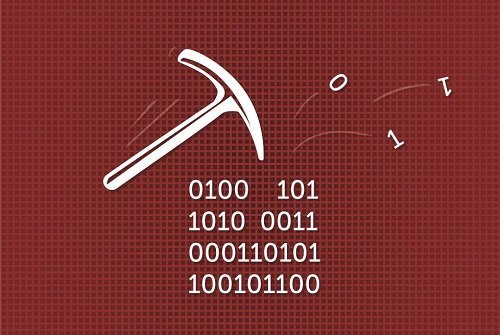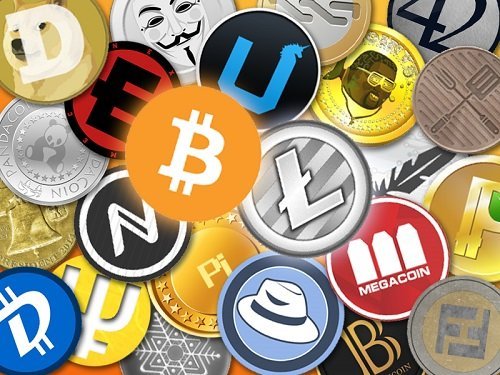Introduction
Cryptocurrency and Blockchains are relatively new technologies that have been gaining a steady momentum of attention over the last few years. I often get asked what exactly cryptocurrency and the blockchain are so I decided to outline it in this piece. I do go into some technical detail but I try to keep it as simple as possible. There is also plenty of information available online to further expand your knowledge. This space can be very complex so don't feel overwhelmed if you don't understand it right away!
Please note that none of the information outlined here is meant to be taken as financial or investment advice. This is simply an informative piece (with some opinions thrown in for good measure).
What are Cryptocurrencies and Blockchains?
Cryptocurrencies and blockchains go hand in hand. Cryptocurrency is the medium of exchange on a blockchain, usually in the form of a ‘coin’ or ‘token'. A blockchain is a distributed database that maintains a continuously growing list of ordered records called blocks.
By design, blockchains are inherently resistant to modification of the data - once recorded, the data in a block cannot be altered retroactively. Through the use of a peer-to-peer network and a distributed timestamping server, a blockchain database is managed autonomously. Blockchains are "an open, distributed ledger that can record transactions between two parties efficiently and in a verifiable and permanent way. The ledger itself can also be programmed to trigger transactions automatically."
For a basic overview in video form, click here.
For a full technical breakdown, refer to the Wikipedia article or this YouTube video (the YouTube video focuses on Bitcoin primarily).
How Cryptocurrencies are created

Traditionally, cryptocurrencies have been created by using computing power to solve complex cryptographic puzzles thus resulting in the issuance of new cryptocurrency. This was commonly referred to as ‘mining’ or proof-of-work (PoW). However, in recent times, many developers have opted to forego the mining aspect of cryptocurrencies in favour of what is referred to as ‘proof-of-stake’ (PoS). For a full breakdown of PoS, click here.
Many of the newer cryptocurrencies in circulation today have already achieved their total supply of coins (or tokens) and no more will ever be created.
The current landscape of Cryptocurrencies
The two most popular cryptocurrencies are currently Bitcoin and Ethereum. Most of you have probably heard of Bitcoin, but Ethereum is a relatively new cryptocurrency (circa 2014) that has been gaining a lot of momentum over the last couple of years due to it’s ‘Smart Contracts’ platform. In short, smart contracts are an easy way for developers and organizations to build applications on top of the Ethereum blockchain. For a technical breakdown, please refer to the docs.
It is debated heavily among the community as to which cryptocurrency, or blockchain, is better - Bitcoin or Ethereum? From my experience, the general consensus is that Bitcoin had the first-mover advantage with promises of features similar to smart contracts, but ultimately has become embroiled in politics resulting in the stagnation of it’s development. This leads me to believe that Ethereum will emerge the ‘victor’ as the development of the platform has been pushing forward at a steady and continuous pace. You can view the Ethereum roadmap here.
What about the ‘altcoins’?

Bitcoin and Ethereum aren’t the only two players - there are many other cryptocurrencies that have taken the stage promising different applications of the blockchain technology. In my opinion, most of these other players are nothing but ‘scamcoins’ that are used as a tool to make a profit when trading. Most of them offer nothing new over the existing Bitcoin and Ethereum implementations of the blockchain and thus are effectively useless.
Another form of ‘altcoin’ has emerged as a result of Ethereum and these are commonly referred to as ‘tokens’. They utilize the existing Ethereum network to build their own applications using their own token.
The Token Age
Many people in the crypto space believe we are currently in the ‘token age’. This term basically refers to the surge of ‘tokens’ that have emerged as a result of Ethereum gaining popularity.
These tokens run on the Ethereum blockchain (or their own) using the smart contract platform. Each token has it’s own use case ranging from building a worldwide, decentralized supercomputer to building a prediction market. The tokens for these projects are openly traded on various cryptocurrency exchanges and are valued based on a number of factors (I’ll go into these later).
Most of these newer cryptocurrencies are raising funds for development through Initial Coin Offerings (ICO’s).
The Concept of Initial Coin Offerings (ICO’s)
ICO’s are a relatively new concept in the cryptocurrency landscape. They function in a similar way to other crowdfunding formats. I like to think of ICO’s as a hybrid between IPO’s (or stocks) and community crowdfunding.
You can participate in an ICO by simply depositing some of your Bitcoin or Ethereum into a specified address and then you are issued with the corresponding ICO token. This is achieved by utilizing smart contracts.
If you participate in an ICO, you are buying into the idea of that specific token with the hopes of profiting from it in the future as the value of the tokens increases (similar to how a stock increases based on a company's performance or perceived value).
What separates Bitcoin and Ethereum?

There are many factors that separate the Bitcoin and Ethereum communities, ecosystems and technology. Bitcoin’s average block time (the time it takes for the network to recognize or confirm the transaction) is about 10 minutes, while Ethereum’s aims to be 12 seconds. The quicker time is enabled by Ethereum’s ‘ghost protocol’. For example, if you were to send someone some Bitcoin, it would take, on average, 10 minutes for them to be able to start using those Bitcoin. On the other hand, Ethereum would be ready to go in under a minute.
The transaction times is one of the major debates being had about Bitcoin. The developers could easily fix the slow block time by increasing the size of the blocks, but this has been met with heavy resistance and is one of the reasons why Bitcoin has stagnated and allowed Ethereum to essentially usurp it as the dominant player.
Another key difference between the two is their monetary supply. More than two-thirds of all available bitcoin have already been mined, with the majority going to early miners. Ethereum currently has a coin cap of 90 million. 60 million were issued during the ICO, 12 million is kept by the developers and 18 million more will be mined in the lead up to Ethereum’s biggest change where the network will no longer rely on mining (proof-of-work) but instead move to a ‘proof-of-stake’ protocol. This change is expected to happen in 2018.
Bitcoin and Ethereum also cost their transactions in different ways. In Ethereum, it is called Gas, and the costing of transactions depends on their storage needs, complexity and bandwidth usage. In Bitcoin, the transactions are limited by the block size and they compete equally with each other.
Ethereum also features its own Turing complete internal code, which means that anything can be calculated with enough computing power and enough time. Bitcoin does not have this capability.
Potential uses for smart contracts
The potential use cases for smart contracts are endless. They enable anyone to build decentralized applications on top of the Ethereum blockchain. We are already seeing the results of this through the alpha stages of the [Golem Network](https://github.com/golemfactory/golem) and the concepts of prediction markets such as [Gnosis](https://gnosis.pm/). These decentralized applications are commonly referred to as ‘Dapps’.
Given the public and immutable nature of blockchains, smart contracts can also be used with financial instruments such as bonds, shares, and derivatives, assurance contracts, and other instruments and transactions where the nodes (computers that are connected to the network) can monitor the events on which the smart contract rules are conditioned. Advantages of a smart contract over its equivalent conventional financial instrument hypothetically include minimizing counterparty risk, reducing settlement times, and increased transparency.
There are applications that are not built on Ethereum but still use smart contracts. One such application is Steem. Steem is a decentralized social network (similar to Reddit) that exists on it’s own blockchain and utilizes smart contracts to pay its contributors. Personally, I’m a big fan of the Steem platform and have been interacting with it over the last couple of months.
How to store Cryptocurrency
Everything that happens on a public blockchain (from transactions to wallet storage) can be seen by everyone. For example, you can see and explore every transaction ever conducted on the Ethereum blockchain by going to [etherscan.io](https://www.etherscan.io/) or the Bitcoin blockchain by going to [blockchain.info](https://www.blockchain.info/).
Storage and transactions are done using blockchain addresses. Addresses are a unique, case-sensitive string of characters that are completely anonymous (unless you tell someone your address).
An example Bitcoin address: 167Fmc7SBugn9DKABhTPc2ziysDHMMn3x2 (this is my own address).
Every address is considered a ‘wallet’ and there are different ways to store your cryptocurrency using these wallets. Every wallet has what’s called a public key (your address) and a private key (which is not publically available). As long as you have access to your private key, you can access all cryptocurrency you have stored on the address that the private key belongs to. You can learn more about public-key cryptography by clicking here.
How to transact using Blockchain technology
Transactions on a blockchain are performed by sending information to and from addresses using wallets. For example, you could use your wallet to send a sum of cryptocurrency to my wallet using the address that I give you (whether that be a Bitcoin address, Ethereum address or any other cryptocurrency).
One important thing to note is that unlike traditional online transactions that use debit/credit cards, you can not retrieve your cryptocurrency once it has been sent (unless that person sends it back to you). Obviously, this is both a blessing and a curse for cryptocurrency. It’s a blessing for people who wish to remain anonymous and for companies who are constantly hammered with credit-card chargebacks, and it’s a curse for people who accidentally send their cryptocurrency to the wrong address or their cryptocurrency is stolen.
What gives cryptocurrency value
There are many factors that go into valuing a cryptocurrency. Given that the space is still young, most value can be linked back to speculation and manipulation. Traders with large amounts of funds (known as whales) can effectively pump up a low liquidity or low volume cryptocurrency by using different techniques. This attracts uneducated investors which further pumps up the price (sometimes 300% in a day) then the whales dump all their coins and make a huge profit. This practice is used primarily on the many ‘scamcoins’ and doesn’t usually have an effect on Bitcoin or Ethereum’s value.
There are more legitimate reasons as to why a cryptocurrency may rise in value. One of the main reasons being simple good news. For example, Ethereum rose sharply in price following the news that they were forming the Enterprise Ethereum Alliance with companies such as Microsoft, IBM etc. This adds a layer of legitimacy and promise to Ethereum that had been unseen in the cryptocurrency space.
Bitcoins first big price rise was due to the promises of the future. Smart contracts and similar features aren’t a new concept and have been around since the early 90’s and the inception of Bitcoin. Unfortunately, due to the political climate that Bitcoin has found itself in, the development of these features for Bitcoin have yet to come to fruition. It’s price rise can also be attributed to the onslaught of media coverage it received once the price had spiked above $100 USD.
Thanks for reading! If you have any comments (or corrections) feel free to leave a comment :)
great read thank you
Very educative. Upvote for u
Thanks this is easy to understand, good job